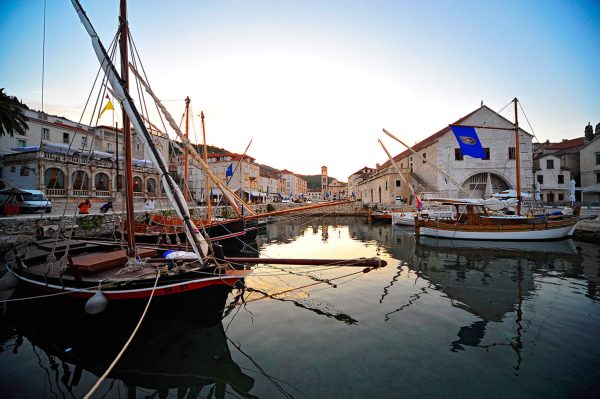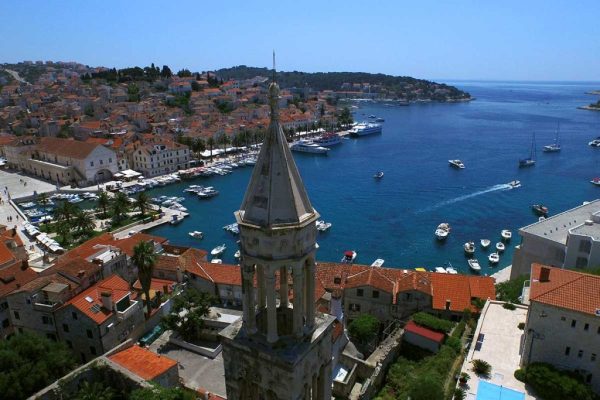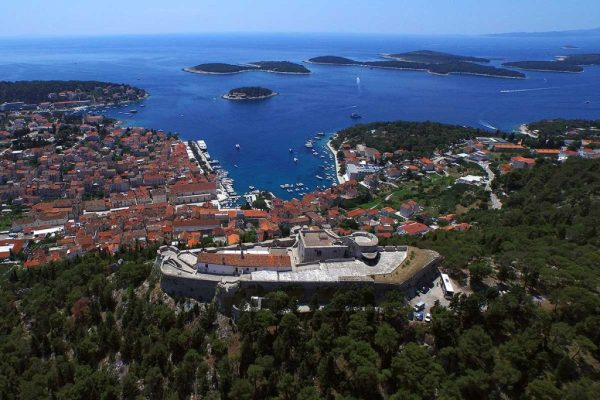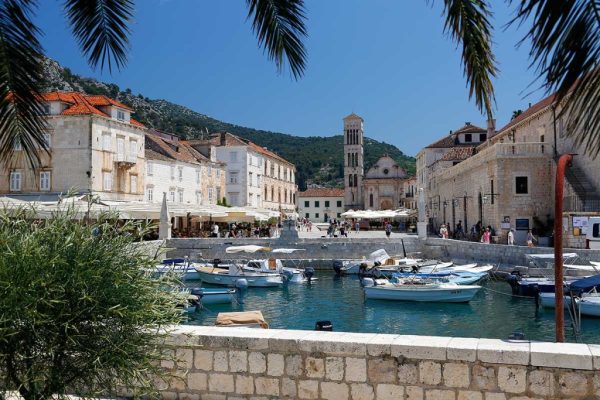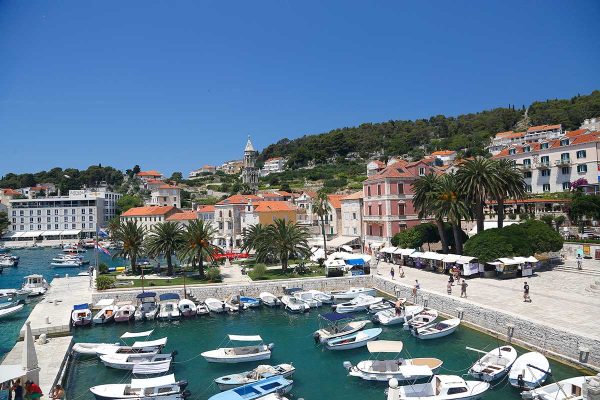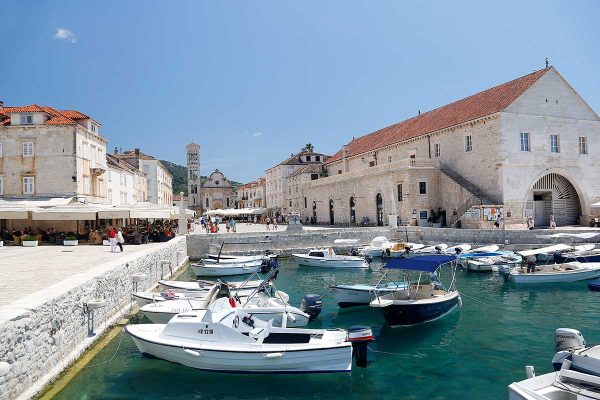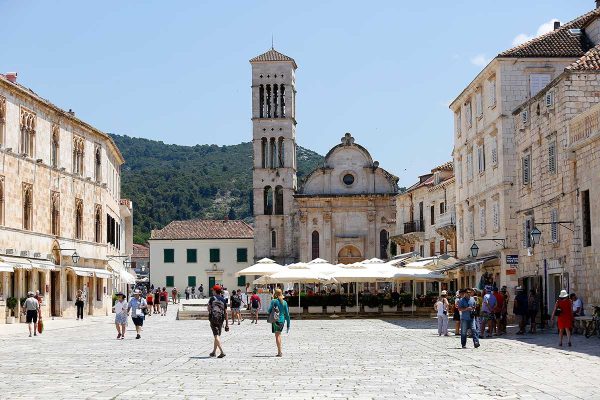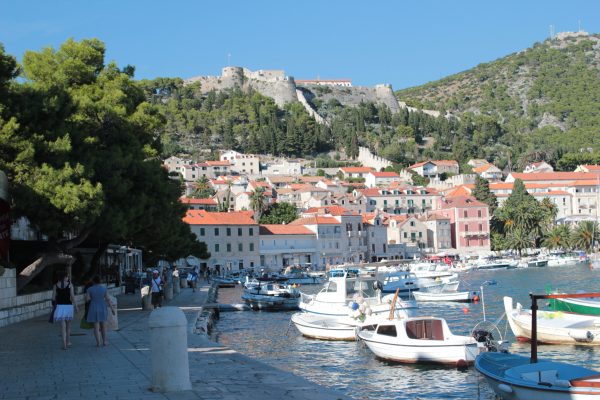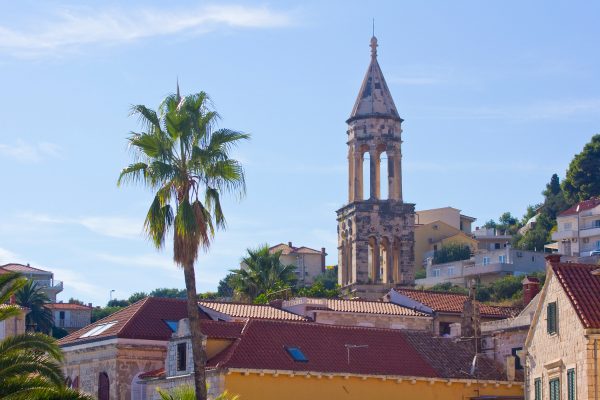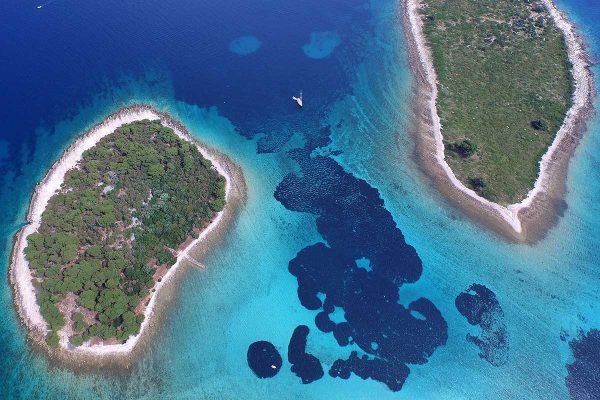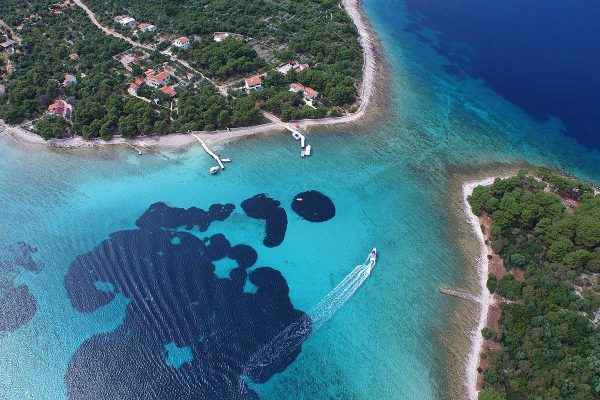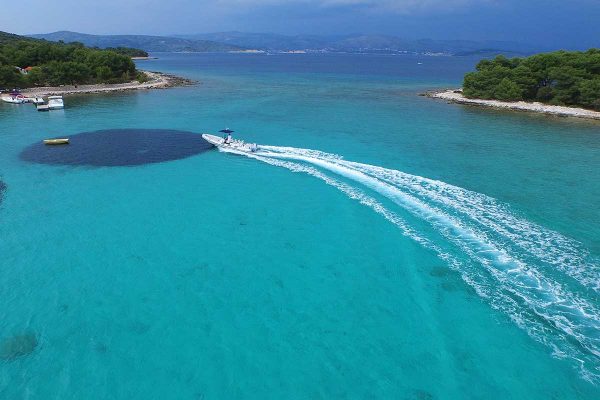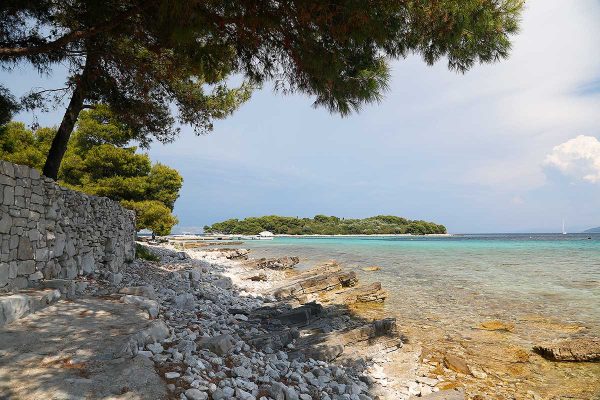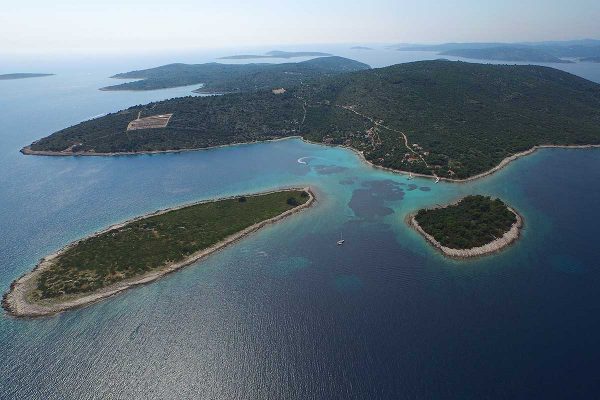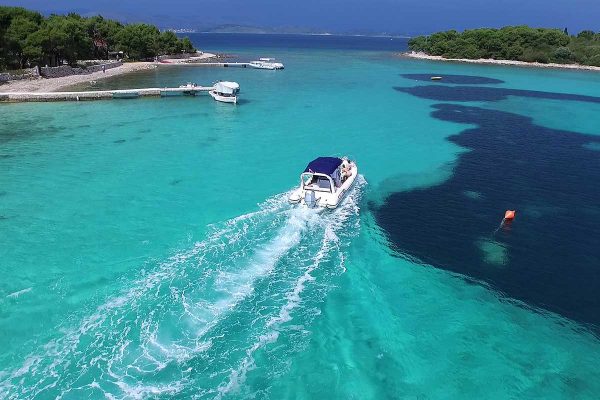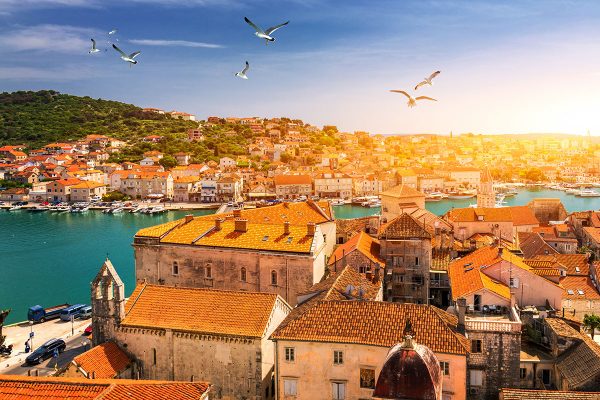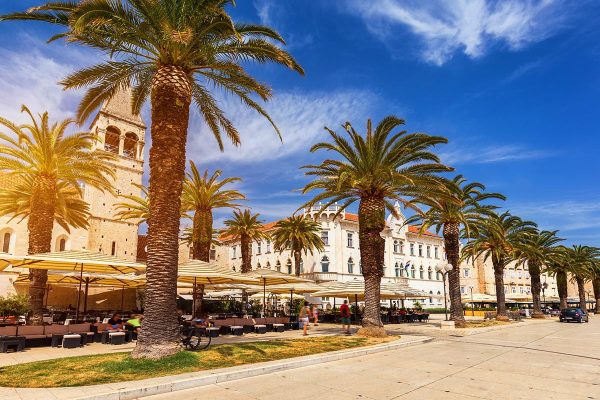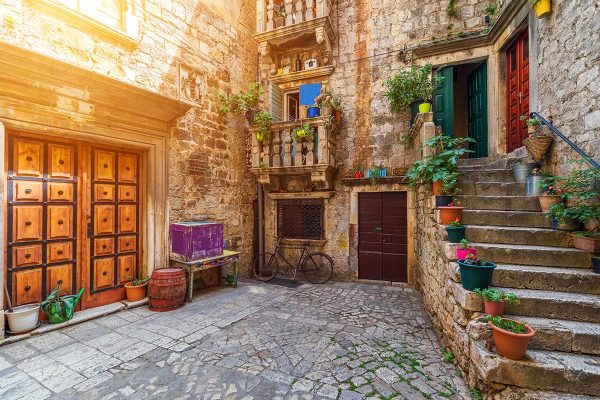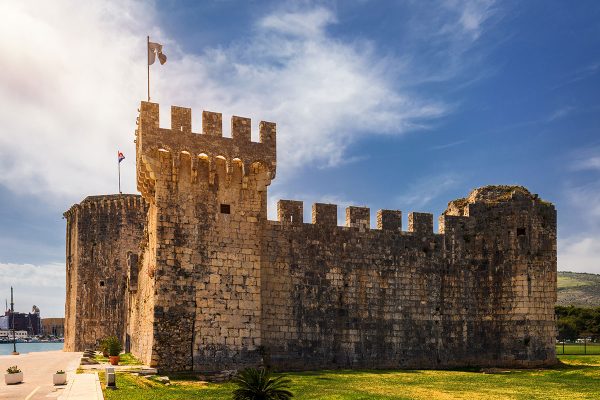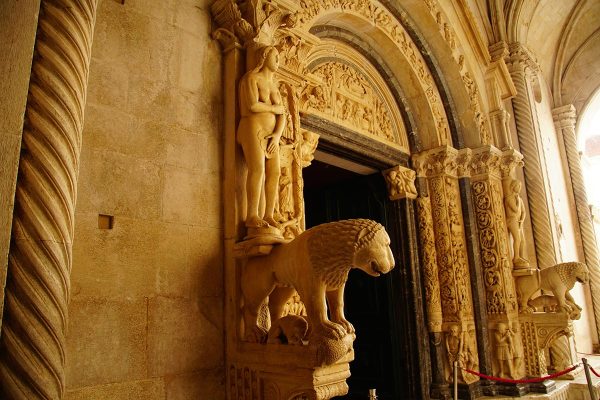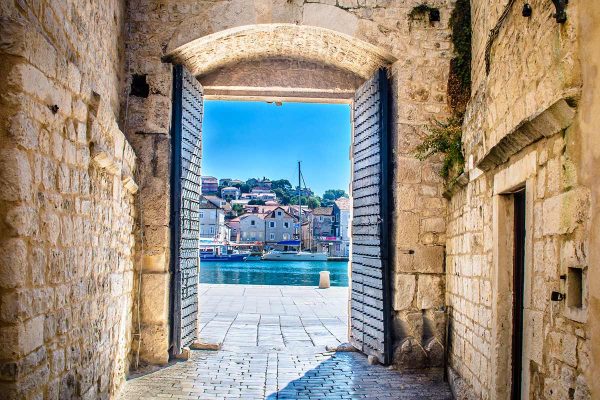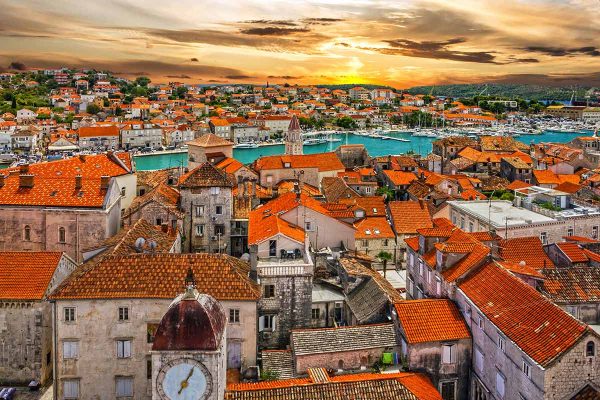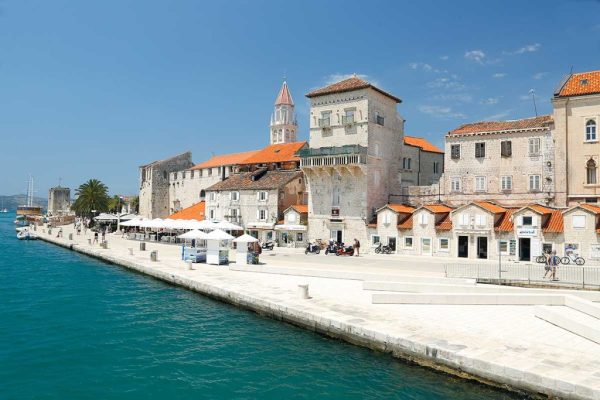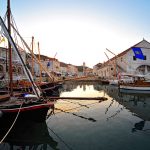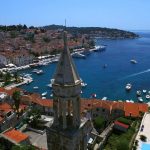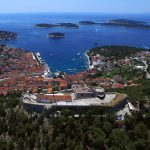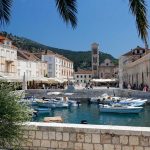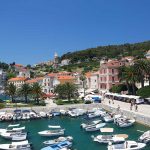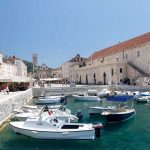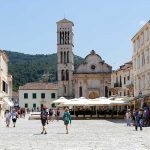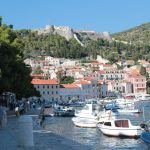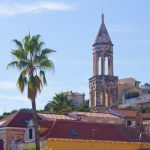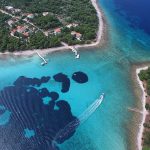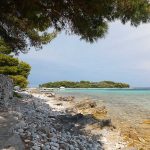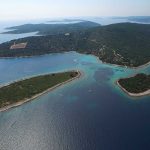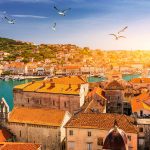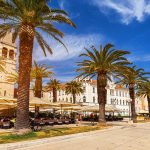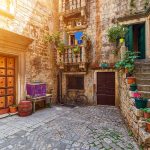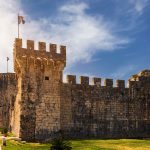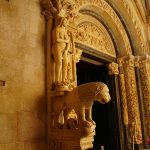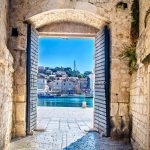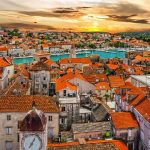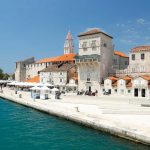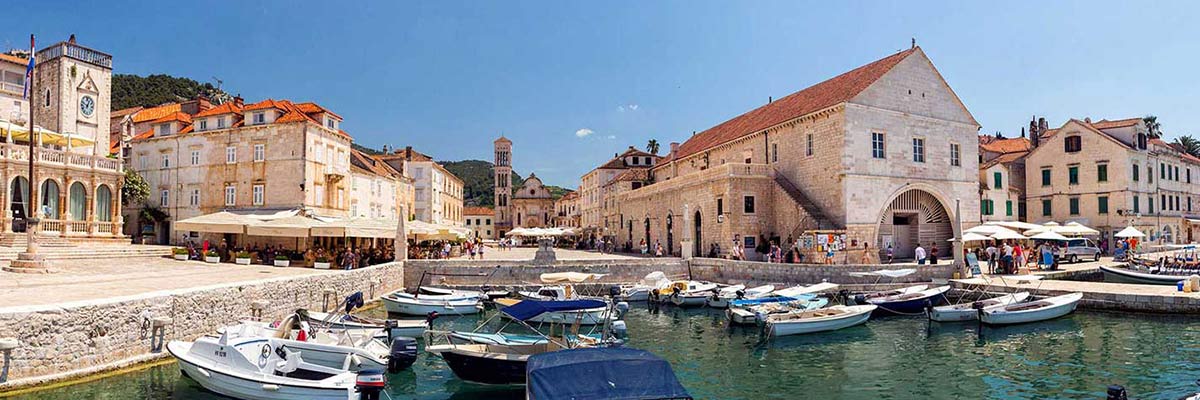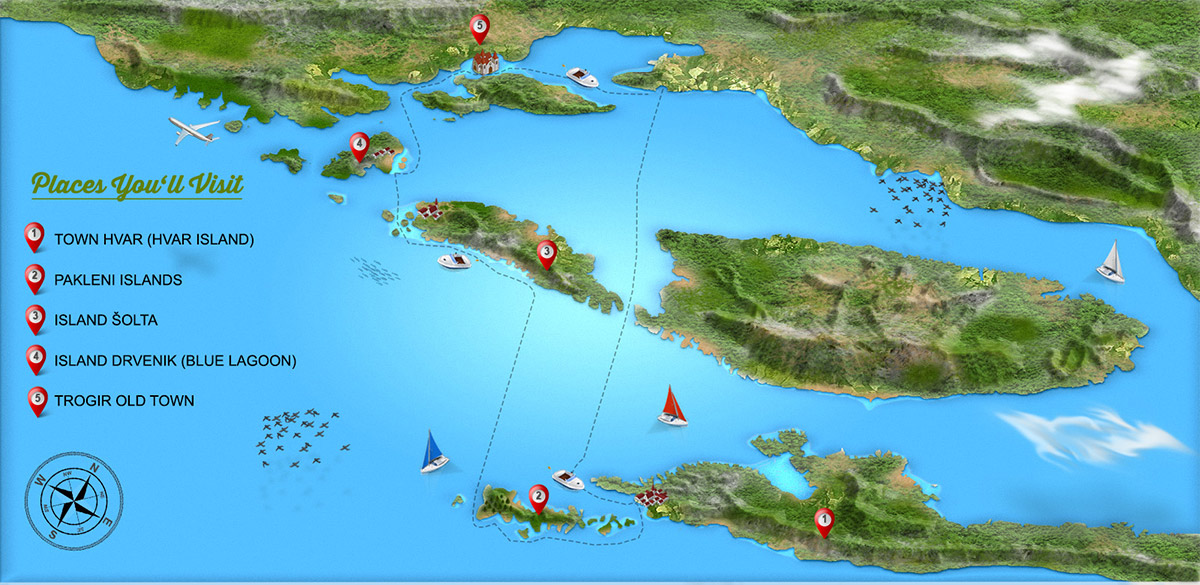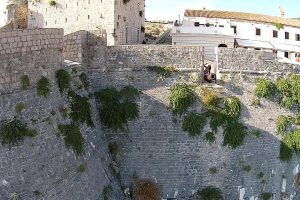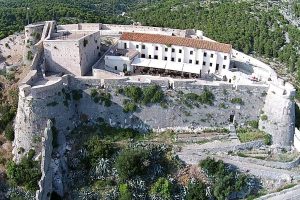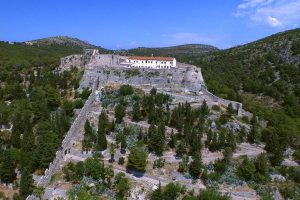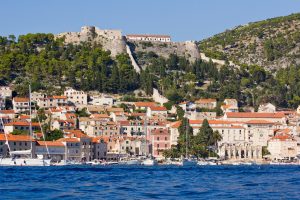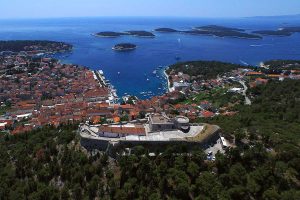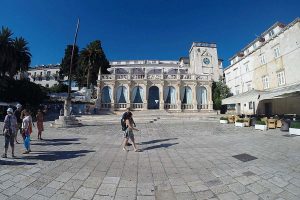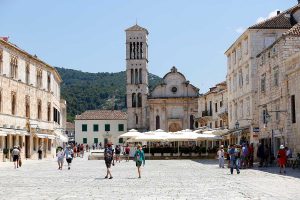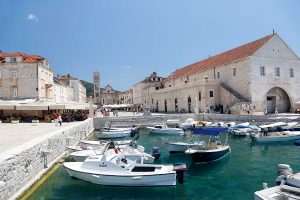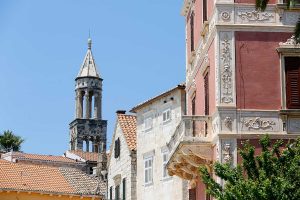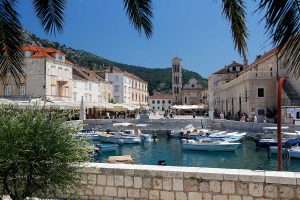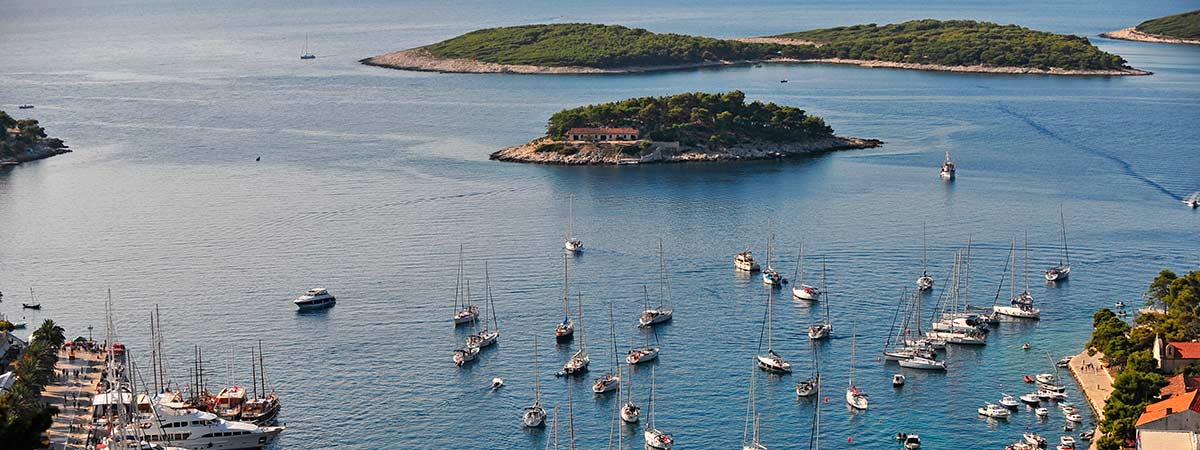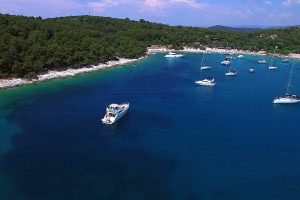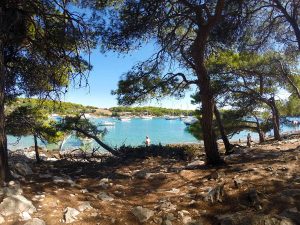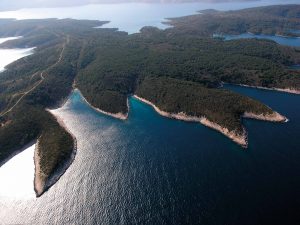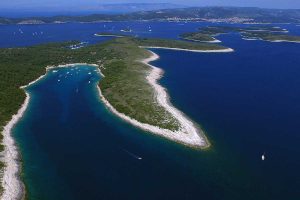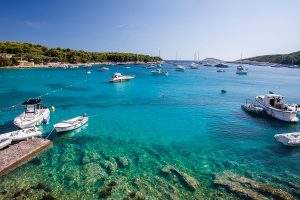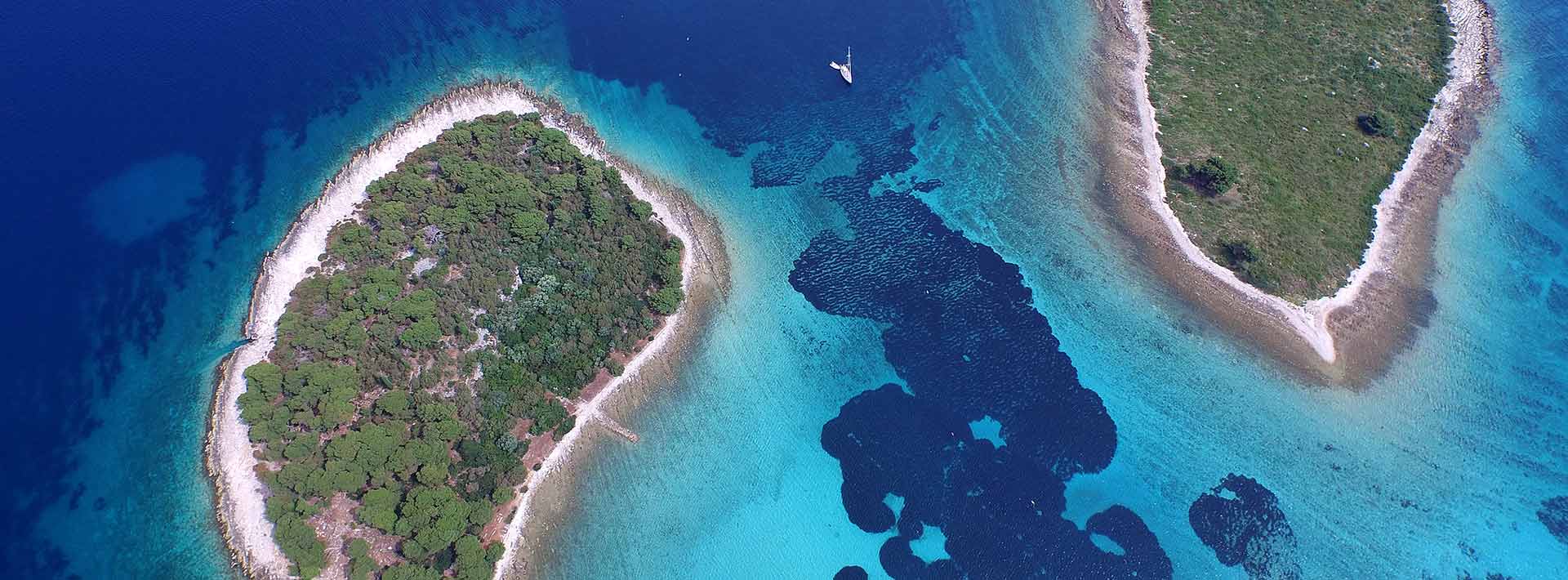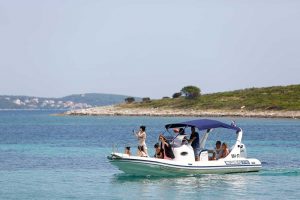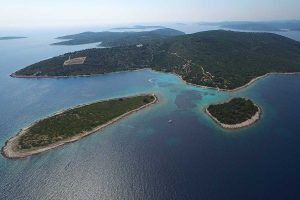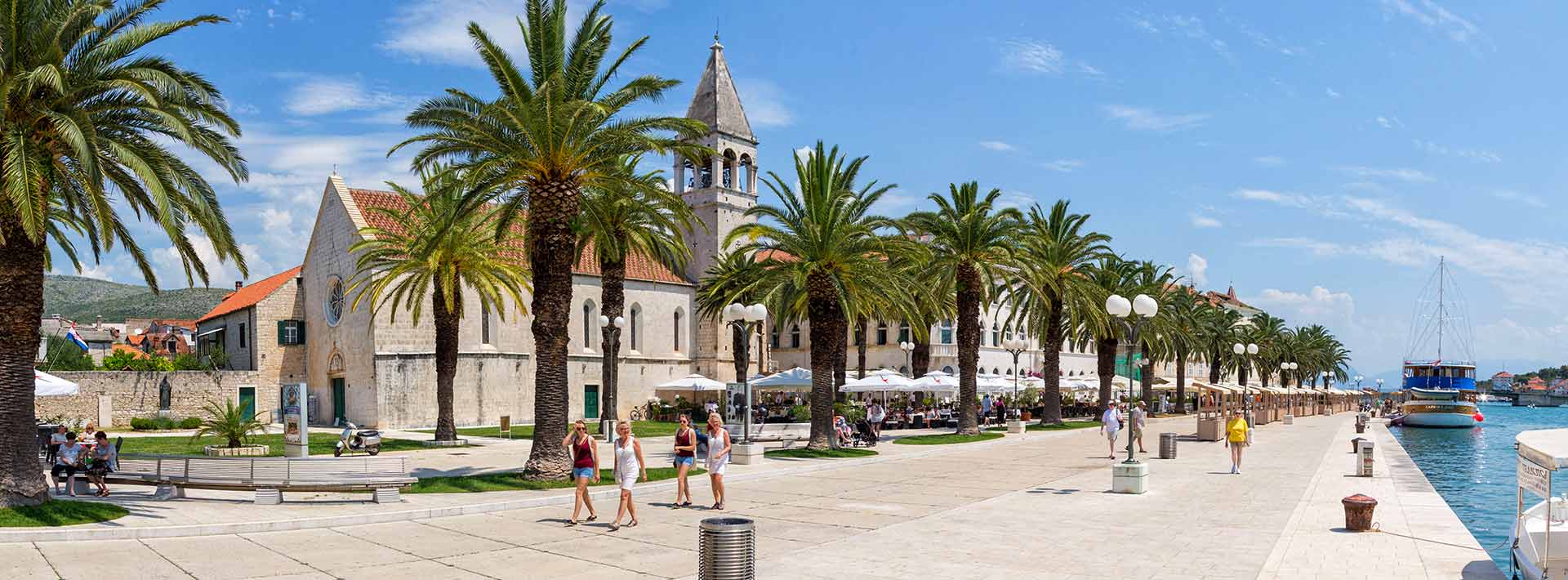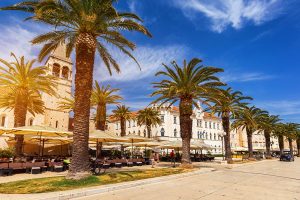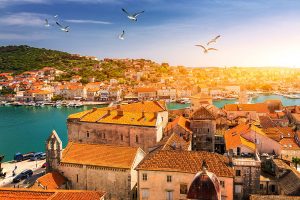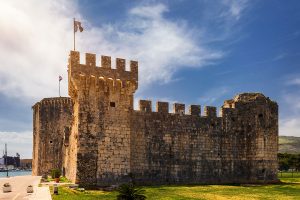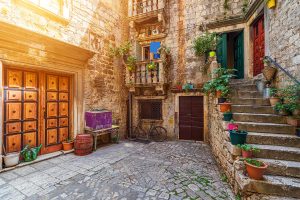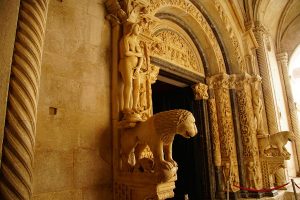What to see in Hvar?
On this full-day speedboat tour, you’ll become acquainted with the most beautiful parts of Croatia’s coast. First up is the island of Hvar, where you’ll have 2 hours to explore this magical island town.
If you’ve heard a thing or two about Hvar, we’re not surprised. Perhaps one of Croatia’s best-known islands thanks to the main town of the same name, Hvar is also the sunniest island in Croatia, receiving 2,718 hours of sun annually!
But what’s all the buzz about? Let’s start from the beginning. The name ‘Hvar’ comes from the Greek word Pharos. Notably, the ancient Greeks founded the colony Pharos in 384 BC, making the town of Hvar one of the oldest in Europe.
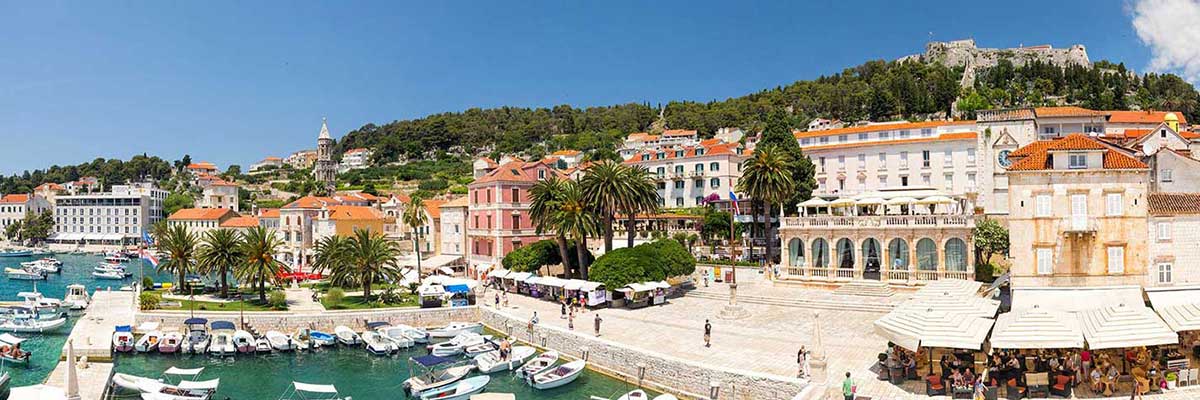
Exploring Hvar town always offers a unique experience with a variety of history and beauty to embrace.
Upon arriving in Hvar, you’ll quickly notice its most famous symbol looming above the island town – the white, distinguished-looking Spanish Fortress.
Interestingly, on this site, the Illyrians built a defensive citadel to protect the fertile field somewhere between 1,000 and 500 B.C. The Greeks and Romans both made improvements on the citadel as they came over the centuries. However, it wasn’t until the Venetians came in the 13th century to protect Hvar against the pirates that the actual fort was built along with the town walls, whose remains you can still see today. A gunpowder explosion in 1579, triggered by lightning, almost completely destroyed the fortress. After it was rebuilt, it has stood in the same form for centuries.
The climb to the top of the fortress isn’t as bad as it looks, either. In under 20 minutes, you can be wandering its walls and admiring the scenic view of the town and adjacent Pakleni islands below.
Located at the entrance to the town square is the Arsenal building, which reopened for the first time in almost 20 years in May 2019.
The Arsenal building was constructed on the site of an old theatre which was destroyed by the Ottomans and completed in 1611. Galleons would sail into the Arsenal where they would undergo necessary repairs.
The upstairs of the building is the site of the first public theater in Europe, which opened back in 1612. The citizens and noblemen would gather under one roof to enjoy the plays, which were held inside this historical landmark until it underwent a necessary restoration which took nearly 20 years. The theatre reopened on May 1, 2019.
Located at St. Stephen’s square, the main square in Hvar town, stands the St. Stephen’s Cathedral. As you walk the square from the port towards the Cathedral, you’ll notice its grandeur and just why it is one of the town’s iconic symbols. The fact that it is the largest city square in Dalmatia is not even the most exciting part!
St. Stephen’s Cathedral stands at the end of the square. While the official age of the cathedral is unknown, we do know that it was built on the site of a church from the 6th century, and in the 13th century, as Hvar assumed its Bishopric, it received its cathedral status.
The Cathedral boasts an interesting entrance where there are two sets of stairs. One set of stairs is weathered while the other glitters like new. This is because one set of stairs was used by everyday people and the other by Hvar’s noblemen.
Since the Cathedral was built over many centuries, you can see elements of Gothic, Romanesque and Renaissance architectural styles.
At its top, precisely four levels above, is the Cathedral’s bell tower constructed in 1550 by local masters, which is the most recognizable part of the Cathedral.
Hvar is also known as the ‘island of lavender’ thanks to its vast lavender fields. Lavender today is used in cosmetics, cooking, or as decoration. It is also used for aromatherapy, as an antiseptic, and is a key ingredient in medicine, too. Apart from its lavender fame, Hvar is also known for its lace-making traditions from agave thread.


